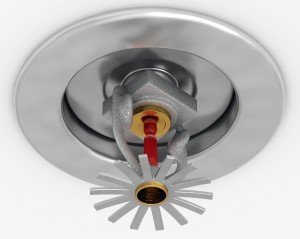From 2008 to 2010, there have been over 365,500 residential building fires. The cost of damaged related to these fires exceeds $7.4 billion. Almost 13,000 people have died in these fires and over 65,000 have been injured. Would all of these fires have been avoided if these homes had sprinkler systems? Probably not, but it is a pretty safe assumption that the death, injury, and financial loss would have been significantly less.

Amazingly, it is estimated that less than two percent of all homes use fire sprinkler systems. One reason is many homeowners believe these systems are easily triggered. If this happens, they believe the home may suffer significant water damage. One would have to ask, what is more important at such a time, belongings or the safety of your family? However, many of the beliefs of homeowners regarding sprinkler systems is fallacy.
Unlike the image we often see portrayed in movies and TV shows, fire sprinkler systems are not easily set off. They are specifically designed to activate at extremely high heat conditions. For most systems, the trigger point is between 135 and 165 degrees Fahrenheit. The system itself is triggered by a small glass head containing a glycerin-based liquid. This liquid expands at these heat levels and causes the glass to shatter, thus setting off the sprinklers.
Even though fire departments react and arrive very quickly, the time it takes for them to get there can often be more than enough time for a fire to rage out of control. A fire sprinkler system can immediately put out the fire or at the very least, prevent it from spreading at a rapid pace. The minutes gained during this critical time may be just enough to allow the residents to escape and prevent the fire from spreading uncontrollably before the fire department can get there to put it out.
